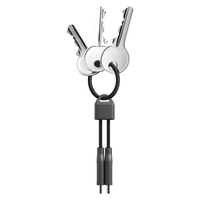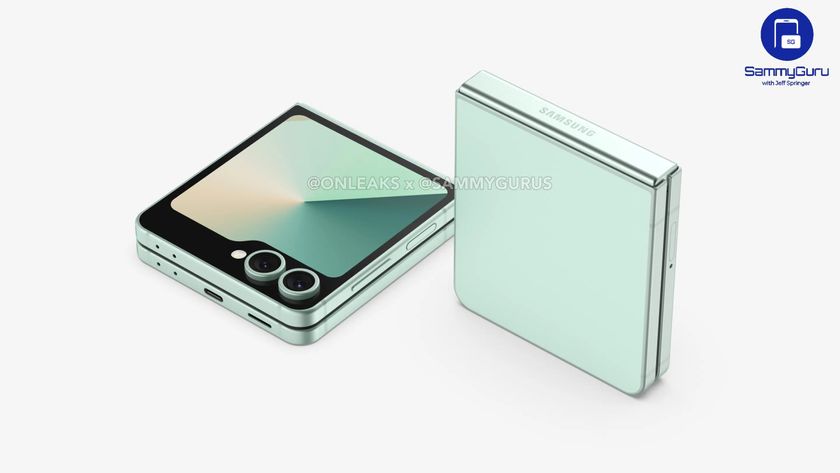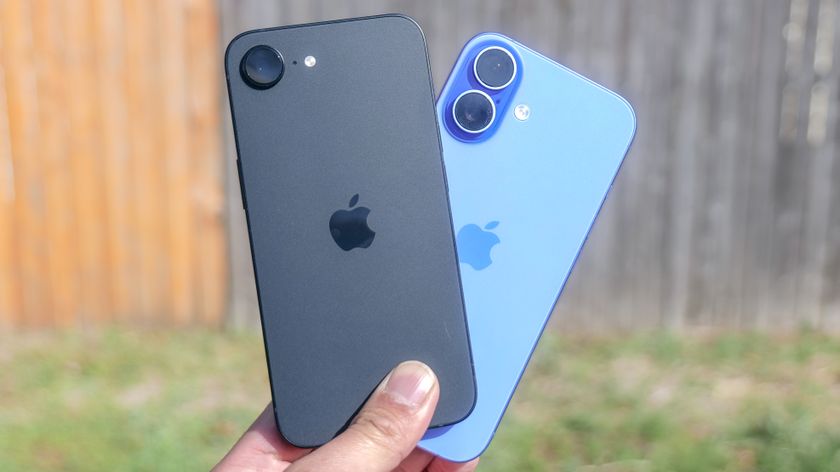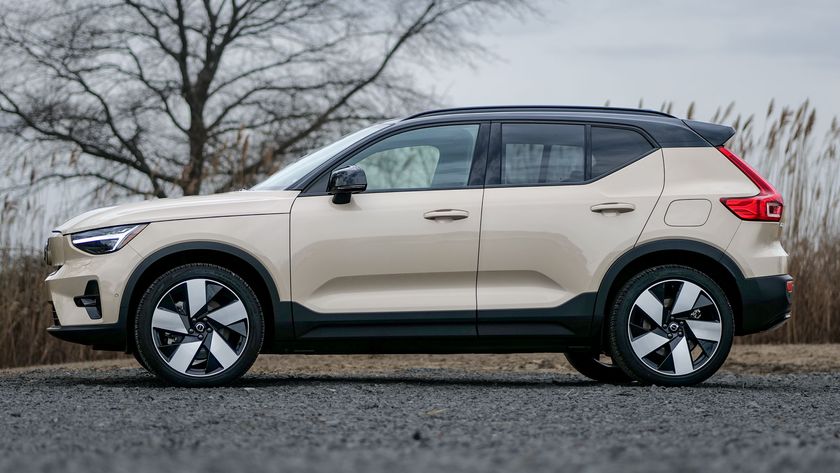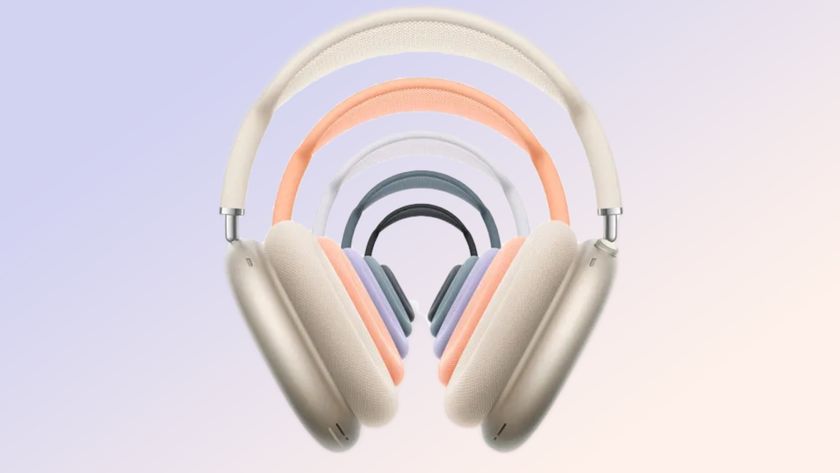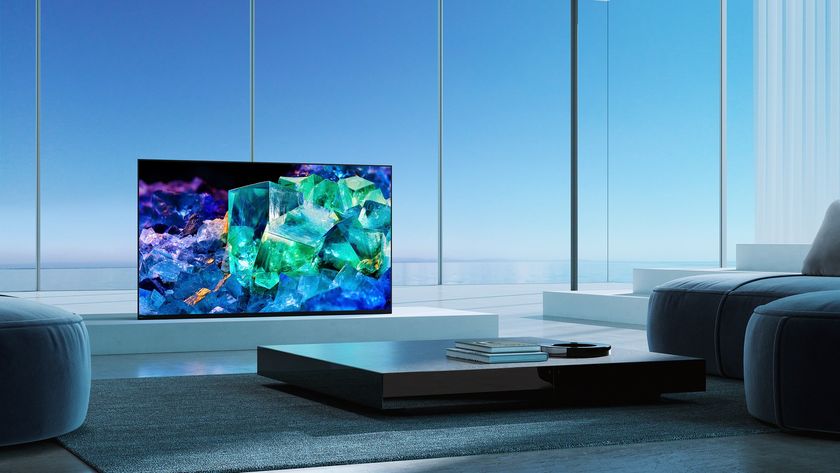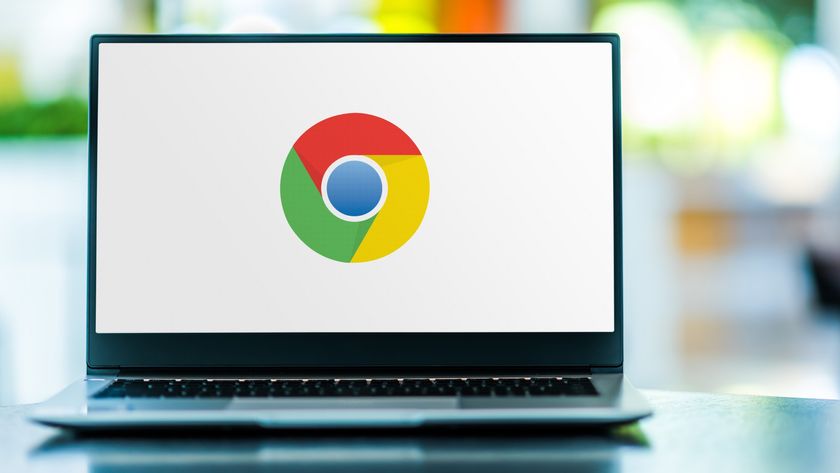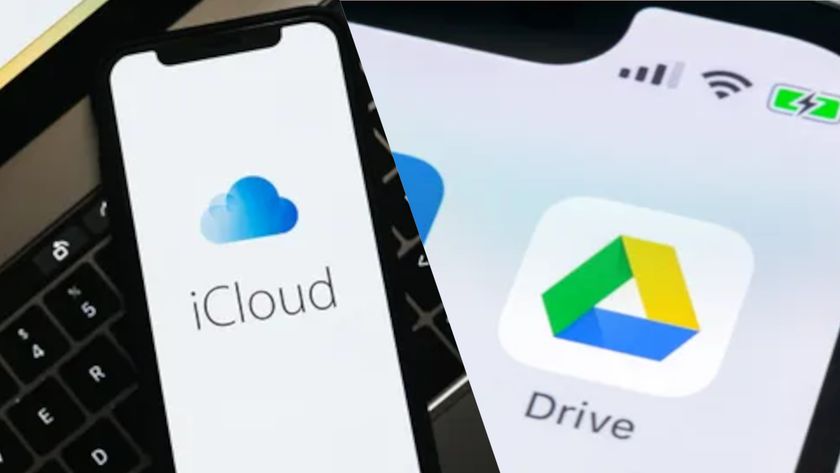This USB-C cable fits on your keychain for emergency charging — and it's 20% off on Amazon right now
Don't miss this cool discount on Nomad's ChargeKey
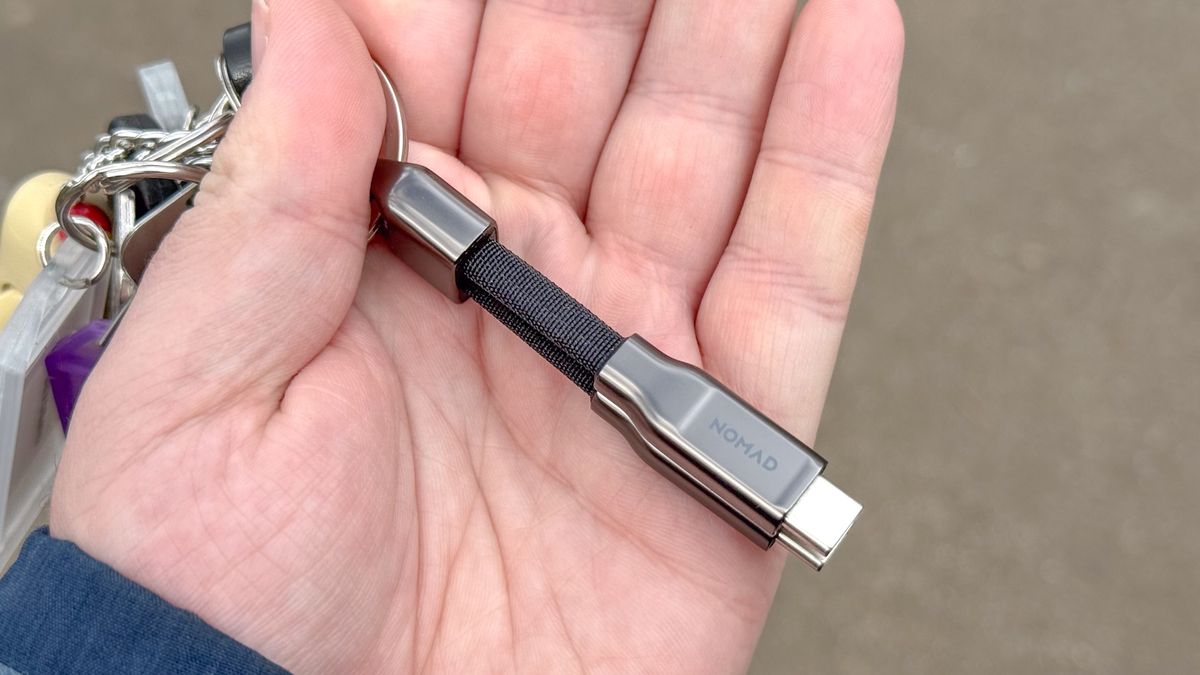
We've all been caught with a low battery from time to time, and the usual solutions to this share a common problem. Whether it's a small charger or a power bank, this still requires devoting a pocket or slot in your outfit or bag. But another option is available.
You could instead bring along a tiny charging cable, ready to siphon power from another device or a regular charger. While a typical USB-C cable is about 3 feet/1 metre long, you can get smaller ones, such as the 6-inch/15cm cable I keep in my work bag for passing data between devices.
But I've been trying out something even smaller — so small it fits on a keychain.
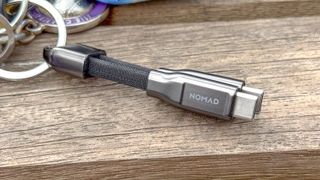
Nomad's ChargeKey, is a 12-cm cable (about 4.7 inches) that folds neatly in two, with its two USB-C connectors magnetized together, so it can happily live in your pocket without rattling around. But when needed, it can easily be opened up and plugged in.
The original ChargeKey is 20% off on Amazon right now, so if you're curious, that's an easy option to take advantage of. But the new second-gen version I've been testing is also easy to grab from Nomad itself, and only slightly more expensive.,
Never be without a charging cable with the Nomad ChargeKey on your keychain. Be aware that this is the original ChargeKey with a 60W /USB 2.0 speed limit, not the newer version with faster power and data delivery.
To get the discount, check the 20% coupon box when adding the ChargeKey to your cart. It's valid until April 19, so you've got a little time to take advantage.
You can get keychain cables from other accessory manufacturers but Nomad's is one of the best.
In addition to looking rather handsome with its braided flex and metal-plated ends, it's got specs way ahead of typical cables, including support for up to 240W of charging. The original's 60W limit was hardly slow, but quadrupling that means you can now use the ChargeKey to power up heavier-duty items like a laptop.
Sign up to get the BEST of Tom's Guide direct to your inbox.
Get instant access to breaking news, the hottest reviews, great deals and helpful tips.
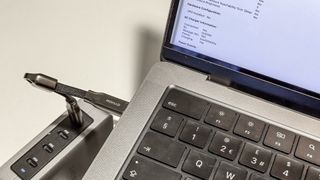
For instance, I normally get 100W of power sent to my MacBook from my charger via a MagSafe USB-C cable. But the ChargeKey was able to support that full wattage, all provided through one of the side USB-C ports.
I don't have anything in my house that charges quicker than that, so I can't say for certain if the 240W maximum is genuine, but I can believe it. Anyone with a laptop armed with a Thunderbolt 5 port can rejoice.
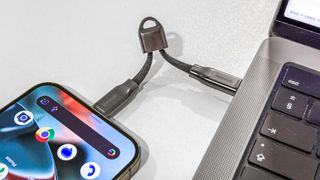
The upgraded innards of the second-gen ChargeKey also enable faster data transfer, up to 10 gigabits per second. Compared to the original ChargeKey, which maxes out at 480 megabits per second, I was able to transfer a 1GB video file in 8 seconds, compared to 29 seconds with the older model.
That's not a huge difference in the grand scheme of things, but if you're wanting to send dozens or even hundreds of gigs of data and don't have a cable around to help, the ChargeKey can help you out there, too.
A couple of snags
As much as I love the ChargeKey, I have to highlight some shortcomings. By design, the ChargeKey is small, measuring a little under five inches when fully extended. That means you're basically glued to your power source for as long as you're plugged in.
That's fine if you're drawing power from something mobile, like a laptop or power bank. But it could be a little awkward if you're plugged into a wall-mounted or table-mounted outlet and still wanting to use whatever's powering up.
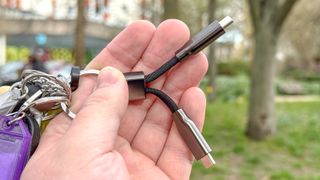
A further word of warning based on my experience with the first-gen version — it scuffs easily. And as something designed to fit on your keychain, that likely means a lot of metal items in close proximity ready to scratch up the ChargeKey.
With the second-gen boasting a new zinc plating on its hardware, it's possible that this version puts up better with wear and tear. But I deliberately didn't put it on my keys so it would still look its best for this article, so will have to report back when I've given it the rough and tumble treatment that the original has had.
In the best case scenario, you'd have your device fully charged before leaving home every day, and be able to rely on it staying charged until you get back again. But in the real world, device batteries lose capacity over time and unexpected events mean you can get through what charge you have in an unexpectedly short time. And that's when you'll be glad to have a ChargeKey on your keychain.
It's a little pricey for a cable, but the hardware is as up to date as it gets, and the form factor can't be beaten. There are rival versions on the market, but Nomad's set the standard, and I wouldn't want anything less.
More from Tom's Guide

Richard is based in London, covering news, reviews and how-tos for phones, tablets, gaming, and whatever else people need advice on. Following on from his MA in Magazine Journalism at the University of Sheffield, he's also written for WIRED U.K., The Register and Creative Bloq. When not at work, he's likely thinking about how to brew the perfect cup of specialty coffee.
You must confirm your public display name before commenting
Please logout and then login again, you will then be prompted to enter your display name.
